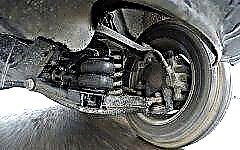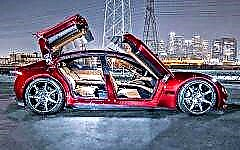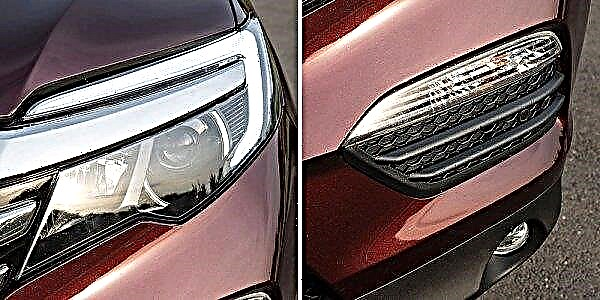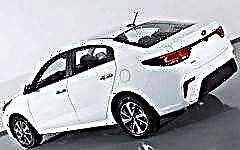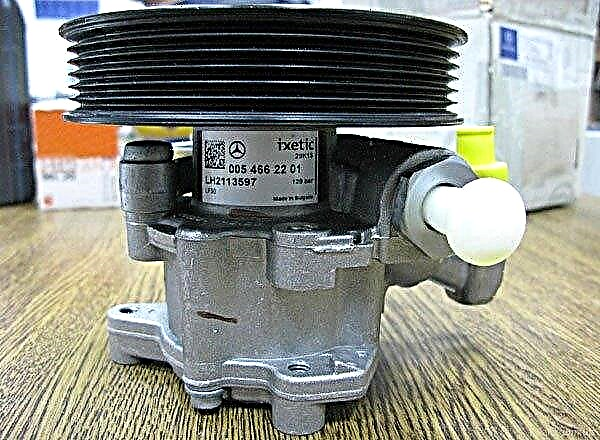The power steering may malfunction. However, it is quite possible to carry out repairs yourself.

The content of the article:
- Mechanism description
- We are looking for a breakdown
- Repair stages
- The cost of repair work
Comparing the steering wheel of old domestic cars, and modern foreign cars, we can say that the difference is big. If you are accustomed to driving without a hydraulic booster, then with the presence of this mechanism, the control will seem like a pleasant game.
What is power steering

The hydraulic power steering (GUR) is a special design, an integral part of the steering column, which consists of a pump, a hydraulic cylinder, a spool, a barrel with a working hydraulic fluid, a torsion bar and other component parts.
Power steering - the mechanism is used for comfortable driving during difficult and dangerous maneuvers. Its task is to ensure reliability and safety. In the event of a tire burst, the hydraulic system prevents it from entering the ditch. If damaged, the driver can continue driving, however, maneuverability will decrease and the steering wheel will be harder to control.
How to easily identify a breakdown of the power steering

A malfunction of the power steering can be due to two factors. In the first case, if a whistle or knock is heard when turning the steering wheel, the breakage touches the mechanical side. In this case, individual power steering systems of the vehicle may fail.
The second reason for a malfunction of the power steering of a car can be hydraulic fluid. Cloudiness, overheating or a rapid decrease in its level indicate problems with the power steering. In the latter case, leakage is possible. To determine it, an inspection of the pipes and connections is carried out. Another reason for the inoperability of the hydraulic booster is the untimely replacement of the working fluid, which leads to damage to the pump or bushings.
Noticeable vibration and hesitation when driving signals that air has entered the tires, which also requires careful inspection and repair.
The main stages of repairing the power steering

There are different hydraulic boosters for each vehicle, and thus a different repair procedure. Below is a general guide to disassembling the power steering.
Before starting the repair, you need to prepare the car. In order to fix it, raise the front part with a support, and put wheel chocks at the back. The engine must be cooled down, in no case, you should not do this on a heated unit.
The power steering should be repaired in a clear order and in a clean, free area. For convenience, use a diagram or drawing, and put all the parts in the order of removal. It is necessary to carry out the steps for repairing the hydraulic booster in the following order.
First, clean the accumulated dirt on the device to avoid getting it inside. For further processes, you will need a hex wrench (imbus). First of all, check the tension of the drive belt. If it becomes loose, tighten the belt. Be sure to drain the fluid before removing the power steering. Remove the fittings and rotate the bipod to drain the liquid. Disconnect the battery contacts and remove the belt. Next, loosen the bolts, unscrew them and remove the steering rods. Then disconnect the bipod. Then you should inspect the bipod for defects. Unscrew all the bolts, leaving one to support the power steering, and push out the shaft with the cover. Remove the power steering pump, dismantle the reservoir with the working fluid. Next, unscrew the ball nuts and remove the bearing.

After all, you can proceed to inspect all the details. First, check for backlash. If it is present, adjust the clearances between the nodes, but do not overdo it, otherwise you can break the structure. After all, assemble the power steering in the reverse order.
If the power steering pump is repaired, it can be replaced with a new one or the old one can be disassembled. To do this, you will need to remove the pump, wash it and split it into two parts by unscrewing all the bolts. Inspect the pump carefully. All parts must be checked for suitability for use. Replace old and damaged pump parts with new ones. Remove the plate, then the shaft and the oil seal. Usually, the old oil seal must be replaced, since most often it is he who disappears on the pump. After washing and cleaning all parts, reassemble them in the reverse order. At the end, fill in new fluid without a belt so that air does not get there.
The repair of the power steering hoses is considered important. They are an important part of the device through which the oil is circulated. Repair is required if the hoses are frayed or worn out. Most often, oily, oily stains can be seen in places of breakdown. Replacing them is not difficult, but it is important to follow the rules. The most important thing is the exact alignment.
It is necessary to connect the hydraulic booster hoses so that not a single gap remains, otherwise there will be a fluid leak. Do not forget that with any depressurization of the power steering system subsequently, after repair, it should be pumped. Due to this, there will be no jerks when scrolling the steering wheel.
Thus, you can repair the main parts of the hydraulic booster yourself. However, if a complete repair of the hydraulic system is required or it is impossible to find one or another cause of the breakdown, you should contact a car service.
The cost of repairing a power steering car
Experts in any car service can diagnose and repair the power steering. The price for repairs ranges from 2,000 to 5,500 rubles, depending on the defective parts. Individual parts for self-repair are as follows: steering racks - from 2000 rubles, belt - from 500 rubles, hoses - from 800 to 2000 rubles, oil seals - from 150 rubles, pump - from 2600 rubles.

